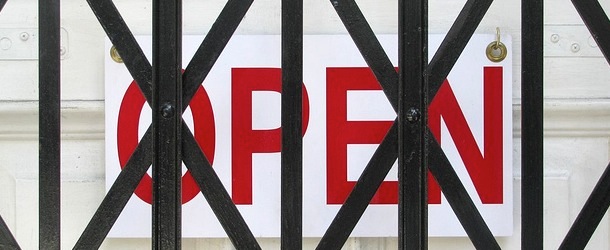
It’s looking more likely that there will be a government shutdown beginning October 1st, which begs the question, what happens to mortgage rates?
Do they go up even more, do they fall, or do they do nothing at all?
At first glance, you might think that they’d rise because of the uncertainty involved with a shutdown.
After all, if no one is quite sure of the outcome, or duration, banks and lenders might price their rates defensively.
That way they don’t get burned if rates shoot higher. But history seems to tell a different story.
Bond Yields Tend to Fall During Government Shutdowns
As a quick refresher, mortgage rates track 10-year bond yields pretty consistently. So if the 10-year yield falls, long-term 30-year fixed rates often fall as well.
Conversely, if 10-year yields rise, which they have quite a bit lately, mortgage rates also increase.
The 10-year yield began 2022 at around 1.80 and is around 4.60 today. Since that time, the 30-year fixed has climbed from roughly 3% to 7.5%.
So there’s a pretty strong correlation between the two, though the spread between them has widened over the past couple years as well.
Since mortgage bonds are inherently riskier than government bonds, there’s a premium, or spread that must be paid to investors.
You used to be able to price the 30-year fixed mortgage at about 170 basis points above the 10-year yield. Today it might be closer to 275 bps or even more.
Anyway, the 10-year yield seems to fall during government shutdowns because of the old flight to safety.
And here’s what Morgan Stanley had to say on the matter: “On average, during shutdowns since 1976, the 10-year Treasury yield has fallen 0.59% while its price has ticked up, suggesting that investors favor the safe-haven asset during these periods of uncertainty.”
In other words, if the 10-year yield falls during the shutdown, 30-year mortgage rates should also drift lower.
How much lower is another question, but if they continue to track the 10-year yields, a .50 drop in Treasuries might result in a .25% drop in mortgage rates.
Did Mortgage Rates Fall During Prior Government Shutdowns?
Now let’s look at some data to see if mortgage rates actually fall when the government shuts down.
The most recent government shutdown took place from December 21st, 2018 until January 25th, 2019.
It was the longest shutdown in history, lasting 34 days. There was one in early 2018, but it only lasted two days.
I did a little research using Freddie Mac mortgage rate data and found that the 30-year fixed averaged 4.62% during the week ending December 20th, 2018.
And it averaged 4.46% during the week ending January 31st, 2019.
Of course, the shutdown drama started earlier in the month of December 2018 when the 30-year fixed was priced closer to 4.75%.
So if we factor all that in, you might be looking at a 30-basis point improvement in mortgage rates.
Prior to that shutdown was the one that occurred on September 30th, 2013 and lasted 16 days.
The 30-year fixed averaged 4.32% during the week ending September 26th, 2013, and fell to 4.28% during the week ending October 17th, 2013.
Not much movement there, but it did continue to drift lower in following weeks and ended October at 4.10%.
You then need to go all the way back to December 15th, 1995 to get another shutdown, which took place under President Clinton.
It lasted 21 days, ending during the first week of 1996. During that time, the 30-year fixed fell from around 7.15% to 7.02%, per Freddie Mac.
Prior to these shutdowns, most only lasted a few days and thus probably didn’t have much of an impact, at least directly.
All in all, mortgage rates did improve each time, though not necessarily by a huge margin. Still, any .125% or .25% improvement in pricing is welcomed right now.
A Lack of Data Makes It a Guessing Game
If the government does in fact shut down this coming week, it’ll mean that certain data reports won’t get released.
This means we won’t see the Employment Situation, scheduled for next Friday, nor will we see CPI report the following week.
There are many other reports that also won’t be released between this time and beyond, depending on how long the shutdown goes on.
As such, we’ll all be flying in the dark in terms of knowing the state of the economy. And the direction of inflation, which has been top of mind lately.
The good news is the Fed’s preferred inflation gauge, the personal consumption expenditures price index (PCE), already came out.
And it was weaker than expected. Prior to that report, we were getting some signs that the economy was still running too hot.
So the timing might work here in terms of higher bond prices and lower yields, which in turn would drive mortgage rates down too.
After all, our last piece of information was that inflation and consumer spending rose less than expected, which is good for rates.
Read more: How the Government Shutdown Affects Various Types of Mortgages
Source: thetruthaboutmortgage.com







